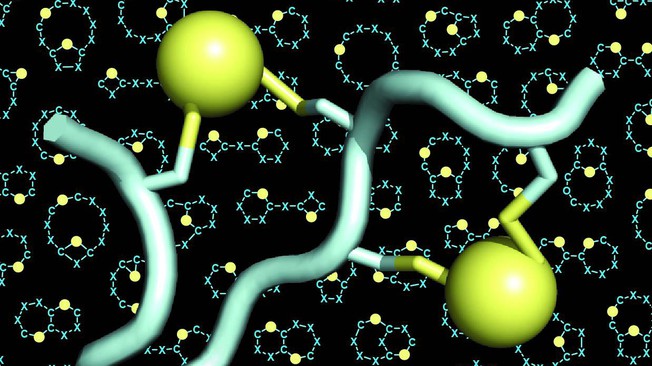New Double-bridged Peptides Can Target Proteins That Cause Angioedema, Study Finds
Written by |

A new strategy that uses small protein fragments with an unconventional structure may be used to target many different disease-related proteins, according to French researchers.
The team at the Ecole Polytechnique Fédérale de Lausanne has already developed a molecule that targets kallikrein, the protein that causes hereditary angioedema, and another targeting interleukin-17 (IL-17), which is involved in inflammatory disorders.
Investigators are now studying these molecules in a lab-based disease setting.
The study, “Cyclization of peptides with two chemical bridges affords large scaffold diversities,” appeared in the journal Nature Chemistry.
The new small molecules, called double-bridged peptides, are composed of 10 to 15 amino acids. Four of these amino acids are chemically connected by two bridges, with each bridge linking a pair of two cysteine amino acids.
The four cysteines can be placed in many places along the peptide sequence, so the double-bridge technique gives researchers the opportunity to create a diverse library of structurally different small molecules that can target disease-related proteins with high affinity.
Because peptides can potentially be cut by enzymes — called proteases — into smaller, useless fragments, researchers examined the stability of their new molecules. Importantly, the double-bridged peptides were barely degraded by proteases, which prevented them from being eliminated too quickly.
This made the peptides an attractive therapeutic opportunity for diseases caused by difficult-to-target proteins.
To demonstrate the potential of the double-bridged approach, researchers developed new peptides that could target kallikrein, the enzyme involved in hereditary angioedema.
After testing billions of amino acid sequences, all with different structures, researchers found four molecules that efficiently blocked the activation of the kallikrein pathway. These peptides had a specific structure that matched very well with kallikrein, binding it with high affinity.
So, even very small amounts of these double-bridged peptides were effective at targeting the activity of the enzyme without affecting other similar enzymes.
The team ran tests to determine if this approach could be used to target other proteins. Indeed, they were able to create double-bridged peptides against IL-17, the protein implicated in several inflammatory disorders such as rheumatoid arthritis and psoriasis.
According to a press release, researchers are developing these peptides for many other disease targets. One of these peptides is already in preclinical testing phases.





